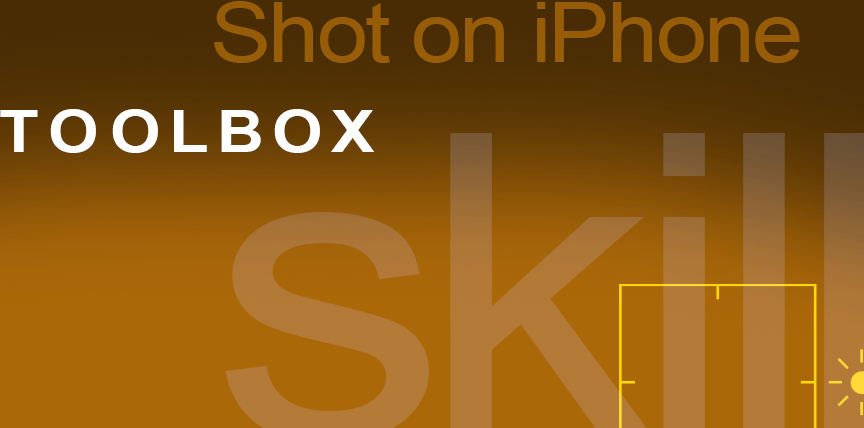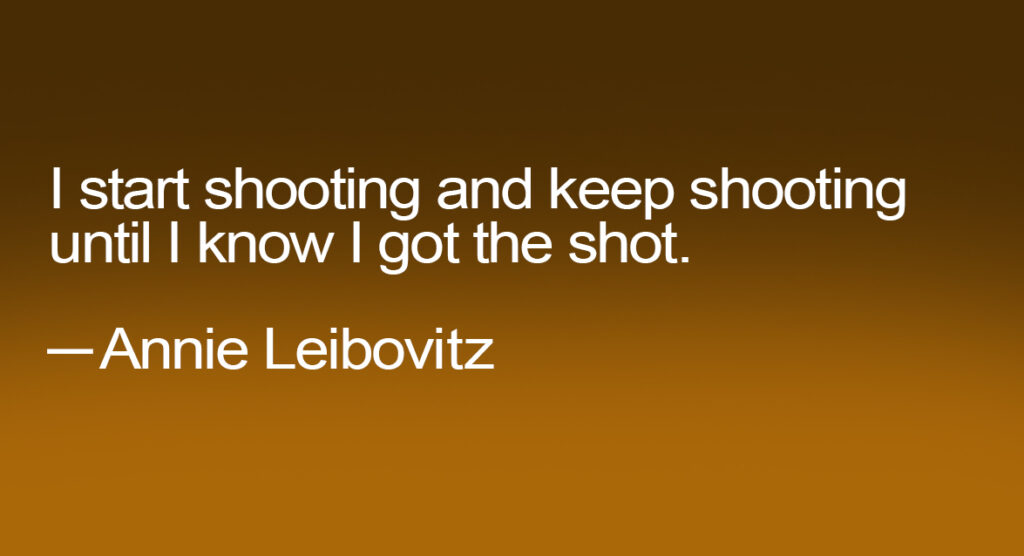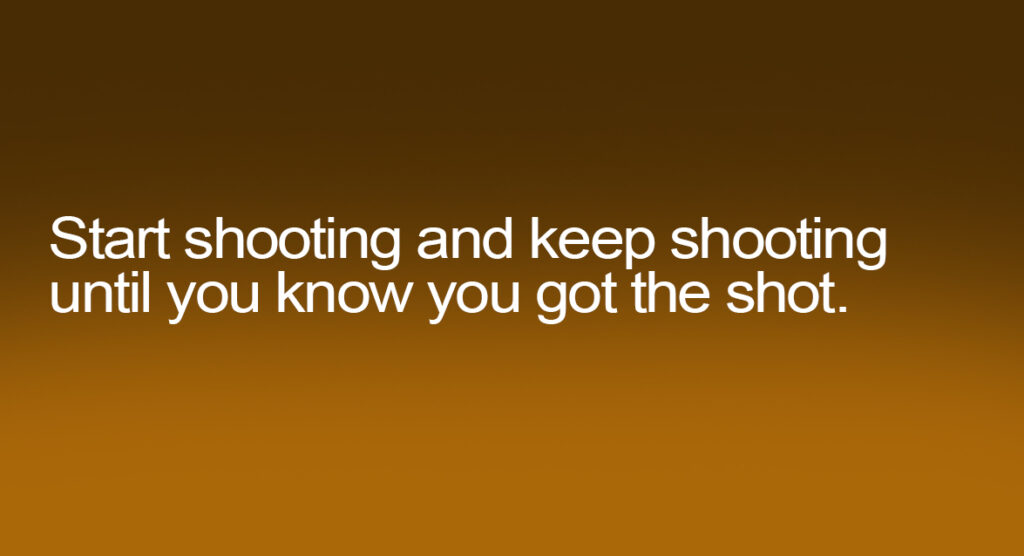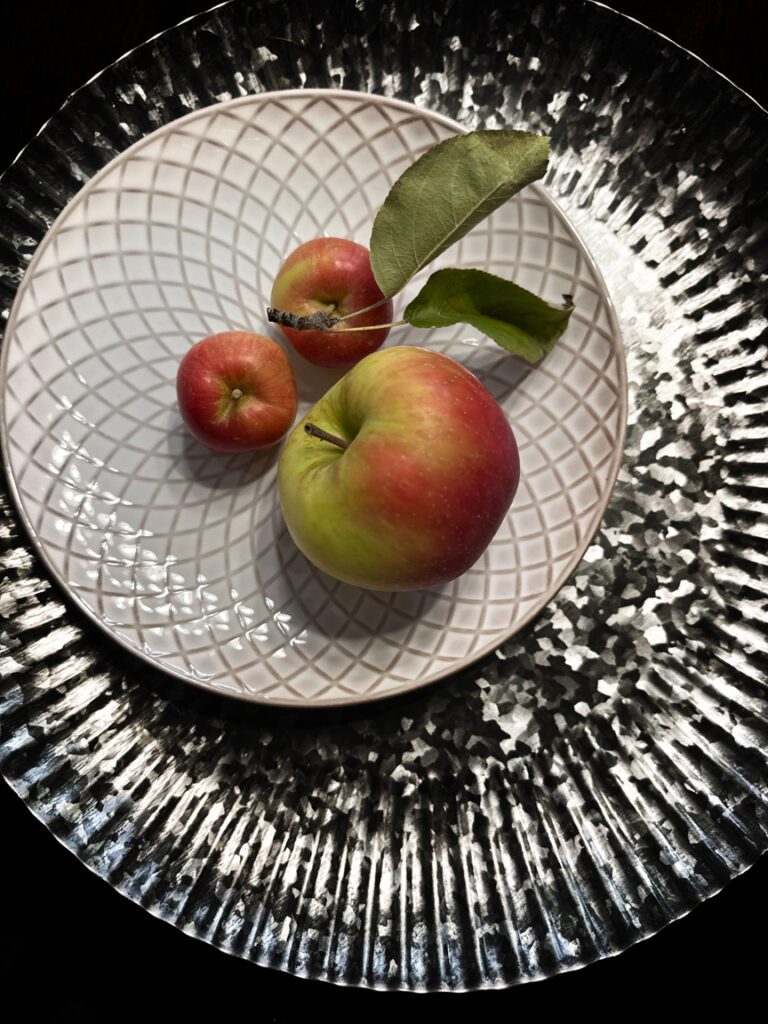
SKILL SET
One Idea Completely Changed How I Shoot
WRITTEN & PHOTOGRAPHED BY: STEVE HOLLOWAY

In 2001 I met a photographer at an ASMP (American Society of Media Photographers) meeting who told me this story:
In 1999 Annie Leibovitz came to San Antonio to photograph Fiesta royalty for her book Women.
Before the shoot, Leibovitz hired him, through the ASMP referral list, to assist.
It’s two years before digital so this is a film shoot.
Leibovitz had 100 rolls of film shipped to his studio to keep refrigerated until needed. On the day of the shoot, his main job was keeping film backs loaded and handing them to her then unloading, marking and logging the exposed rolls.
He got to watch the photographer who shot for Rolling Stone, Vanity Fair and book after book after book, defining the visual landscape of America along the way.
There was one moment, in between setups, that the conversation opened up to a question. He asked what she looks for when she shoots. She replied “I start shooting and keep shooting until I know I got the shot.”

She starts shooting and keeps shooting until she knows she got the shot.
Hearing this story instantly changed the way I thought/think about shooting. And what I think about every time I pick a camera up.
It also made me wonder how many times I stopped shooting before the real shot happened. How many times I walked away just before I found a different point of view, the light shifted, an obstruction moved or a facial expression changed in a way that better tells the story I was portraying.
Keep in mind when I heard this story.
It’s 2001. Digital commercial photography was just around the corner but it wasn’t here yet.
A big part of a photographer’s job (my job) was still very mechanical. Starting with film and lighting test shoots before going on location to nail down how each will work on assignment. Then choosing which film to use and how to process it. Lighting every set up to compensate for film’s limited dynamic range. And, finally, manually confirming focus and determining an exposure.
It was easy to be preoccupied with the technical side of shooting, to solve the mechanical problems, shoot and move on.
Then I heard this story. It was an eye-opening, “why hadn’t that ever occurred to me before” moment.

Learning to think about the process.
This story taught me how to think beyond technical issues. To think about the process. Start shooting and keep shooting until you know you got the shot. It’s an idea that touches everything you do when you’re shooting.
Fast forward to today. The iPhone’s automatic focus and exposure together with AI assisted HDR (high dynamic range) image capture technology solves the technical issues of lighting, exposure and focus that took so much time, skill and effort. That makes it the perfect tool to shoot with straight out of your pocket. And to keep shooting until you know you got the shot.

It’s 20+ years since I heard this story. I’ve found that about a fourth of the time, the best shot is one of the first shots taken and more than half of the time, it’s one of the shots from the last setup (for the still life above, it was image 12 of 14).
And that it’s very, very rare that I don’t capture the image I had visualized.

Three Apples with Plate & Platter. During our trip through New England, we stayed in Portsmouth, New Hampshire. These apples are native to the region and were picked nearby. This still life, image 12 of 14, was captured as part of the New England trip story.
Captured with an iPhone 14 Pro Max, shooting overhead looking straight down on a dining room table, handheld using a Beastgrip and Bluetooth remote trigger (my everyday setup), under natural overhead tungsten lights.
The image has been color corrected and graded retaining the main subject’s vivid color and brightness then grading the background to add a low key color grade.


QUICK READ: GOLDEN HOUR

Shooting During the Golden Hour
The last hour before sunset and the first hour after sunrise are called the “golden hour”. Movies will shoot for an hour after sunrise and an hour before sunset for days to capture a golden hour scene.
Shoot during the golden hour’s even, soft, directional, warm light and it will be hard to overexpose or underexpose highlights or shadows. It’s almost always the perfect light to capture extraordinary images.
The Bay Behind The Lighthouse Inn. During our Back to the Coast road trip, I photographed Rockport Bay outside of our room at The Lighthouse Inn more than once and wasn’t happy with any of the shots.
Then, on our last night, shortly before sunset, during the golden-hour, I looked out the window of our room. The clouds had broken and the sunlight was skimming perfectly across the water. I hurried to get outside. I started with a view from our back patio then moved closer.
I shot at the ground level point of view. Then eye level. Finally, I placed the camera at waist level and captured this image handheld on an iPhone 11 Pro Max with Beastgrip and Bluetooth shutter release.

- Shot on iPhone Toolbox [ Homepage ]
- Two Essential Skills [ Change How You Shoot ]
- Two iPhone Features People Take for Granted
- Toolbox How To Guides [ 27 Deep Dive Guides ]
- Translate your Skill Set into a Working Process
- IDEA FILE Shot on iPhone Gallery One
- IDEA FILE Road Portraits One
- IDEA FILE Road Portraits Two
- Digital Evolution
- From The Batman to Shooting on iPhone
- Making the Case For Shooting on iPhone
- Camera and Light Kit Ideas
- Copied on iPhone
- The Power of One Idea
- Becoming Proficient in Post Production
- Designing with Type
- Learning From Cinema
- How the Three Lenses on iPhone Work
- Here are My Influences [ Who are Yours? ]
- Steve Holloway [ Photographs ] Pre iPhone
- Steve Holloway [ Memoirs ]

